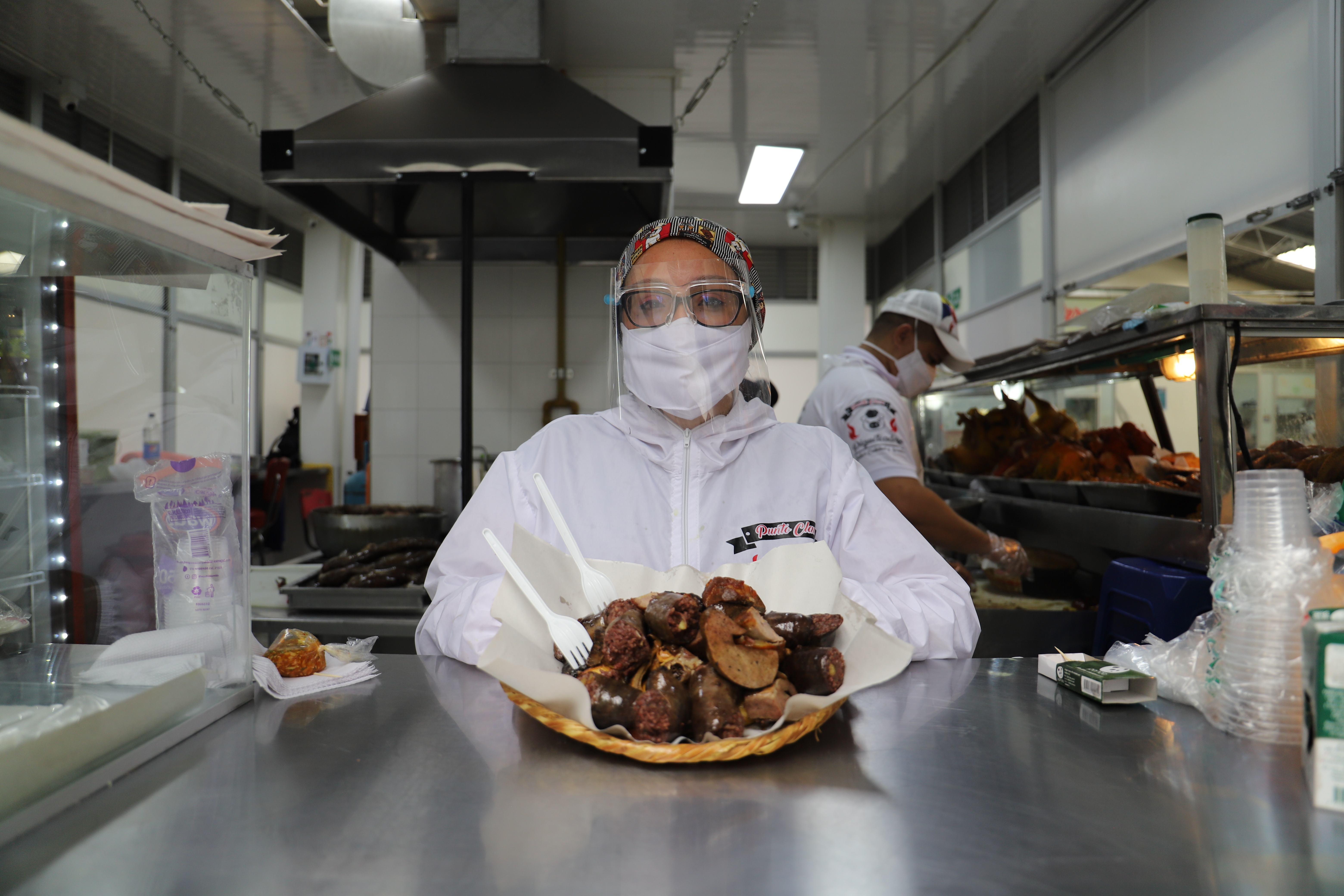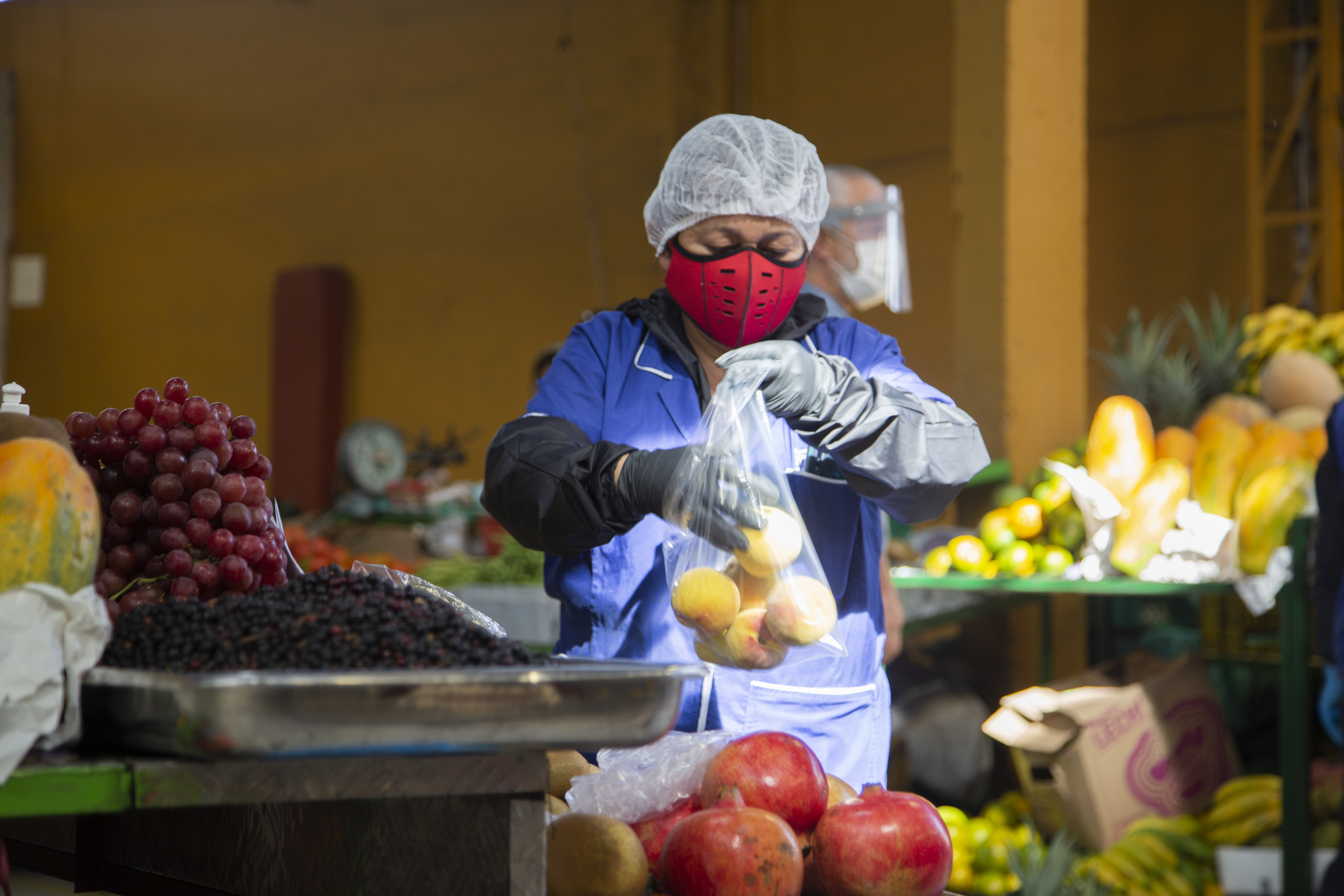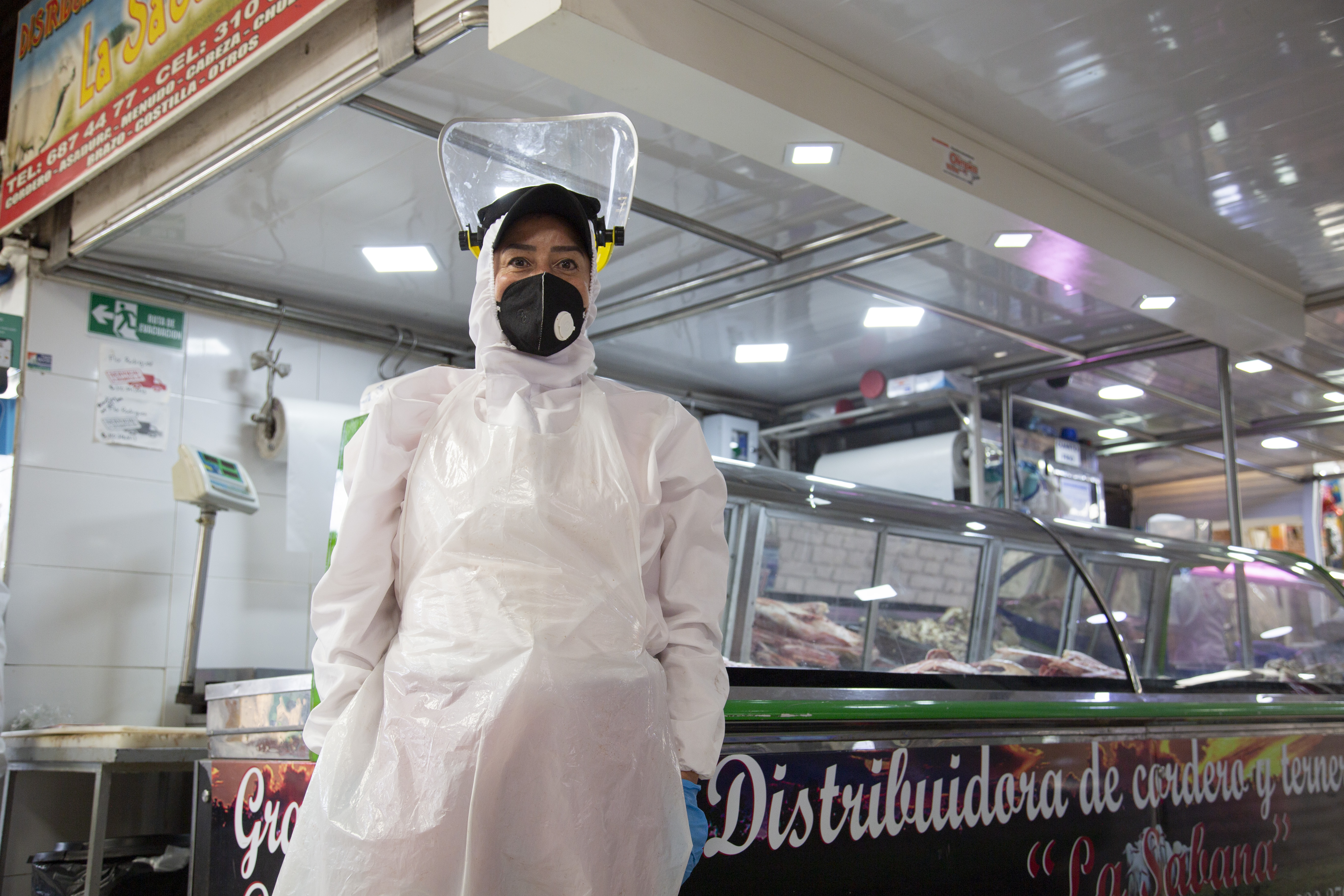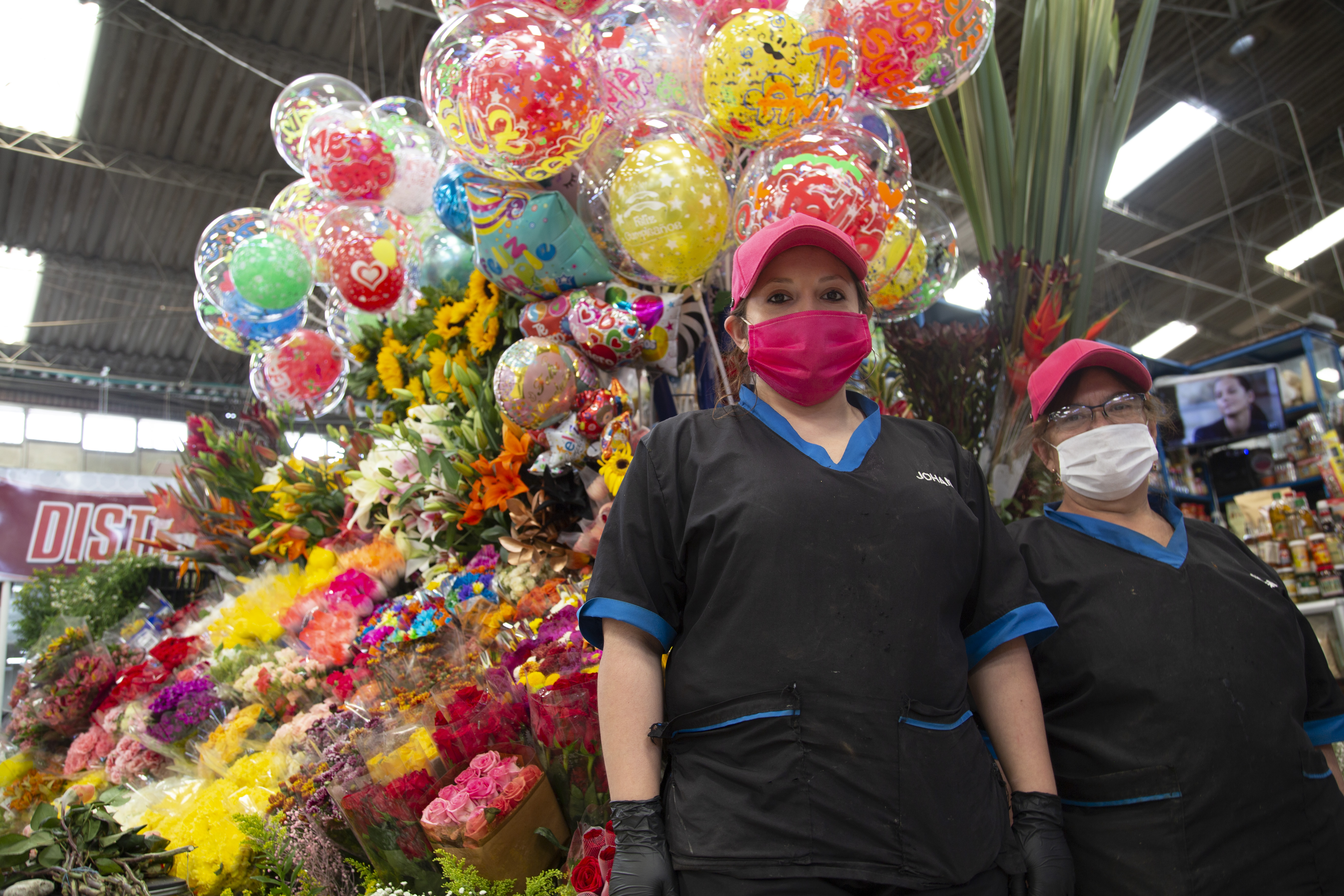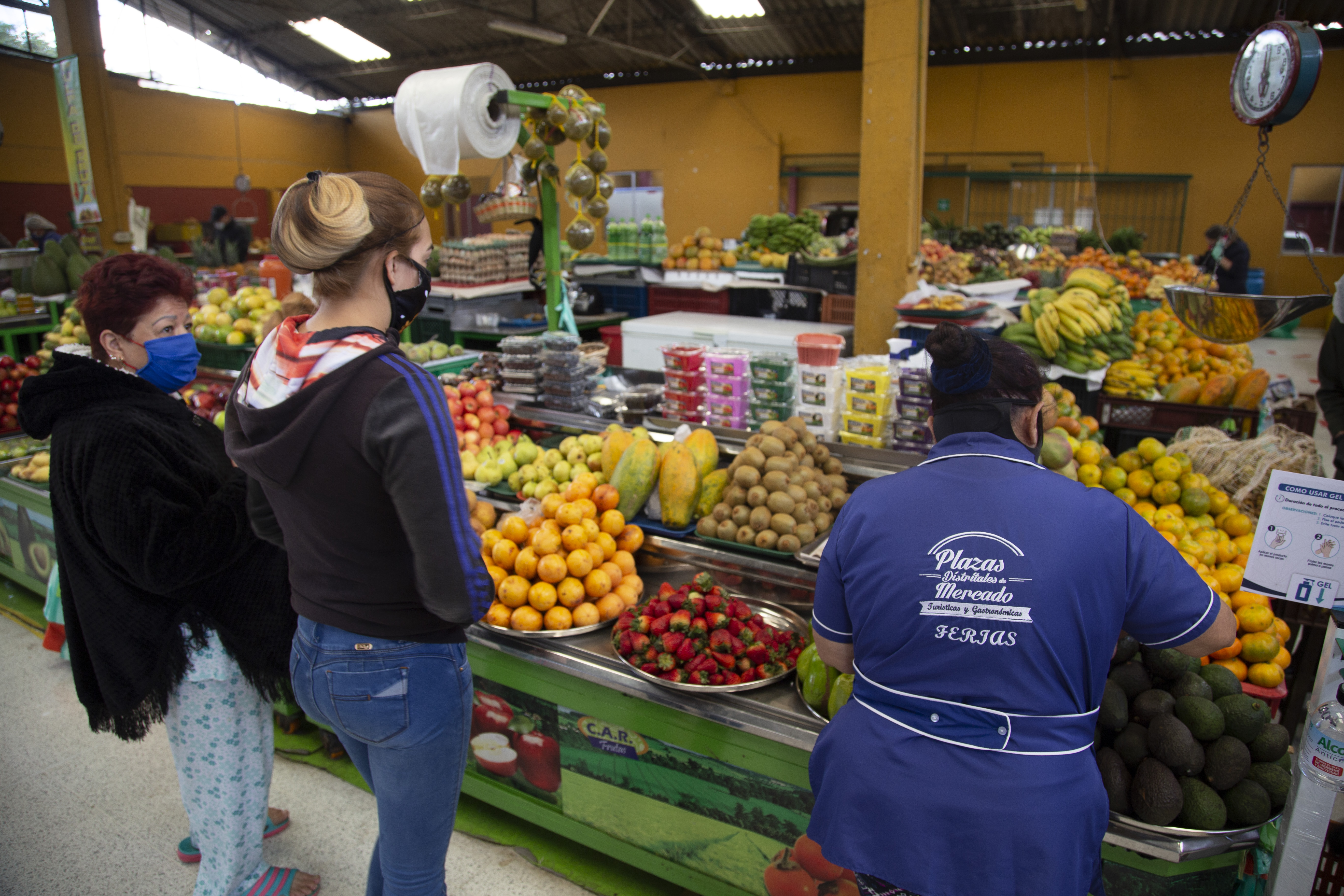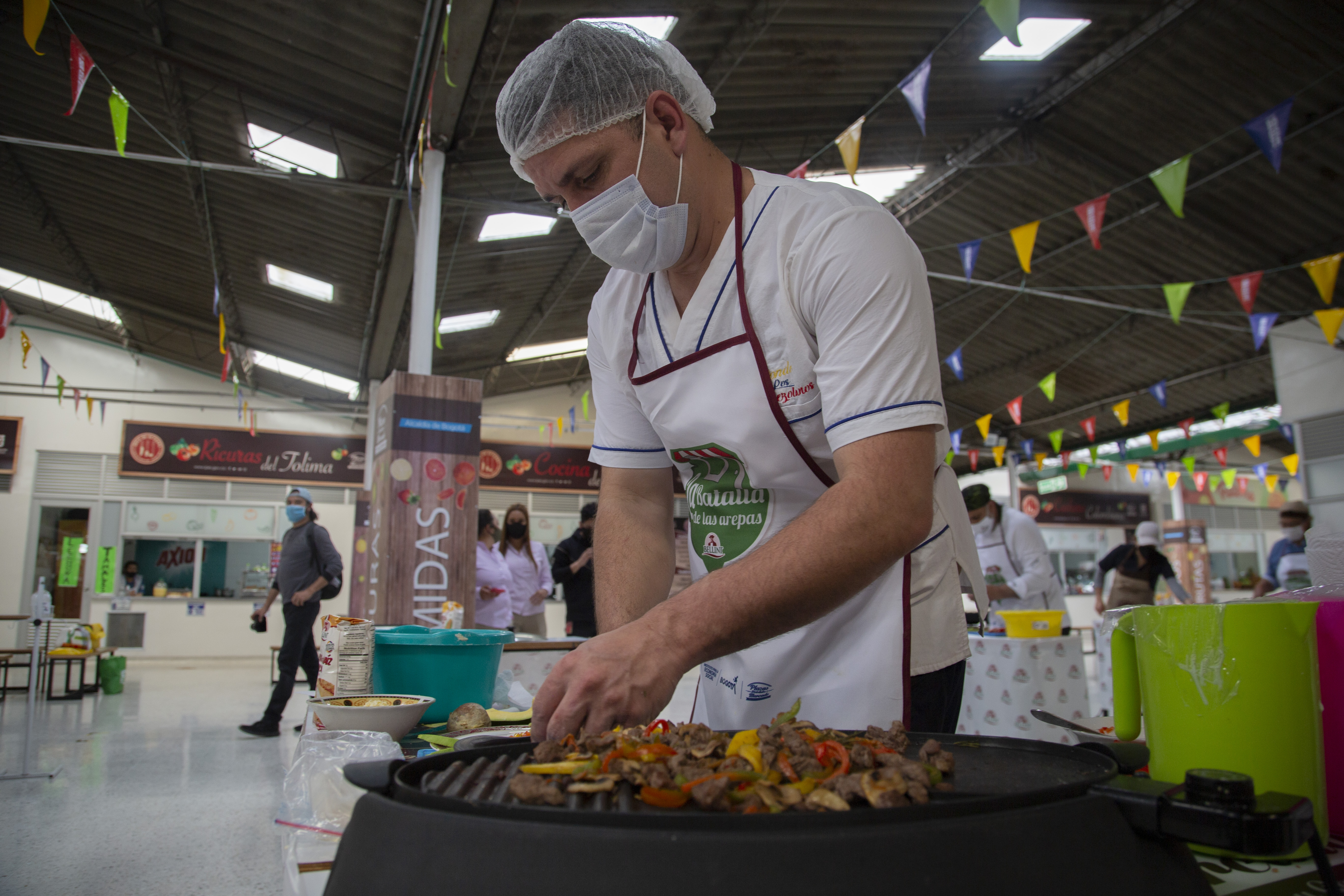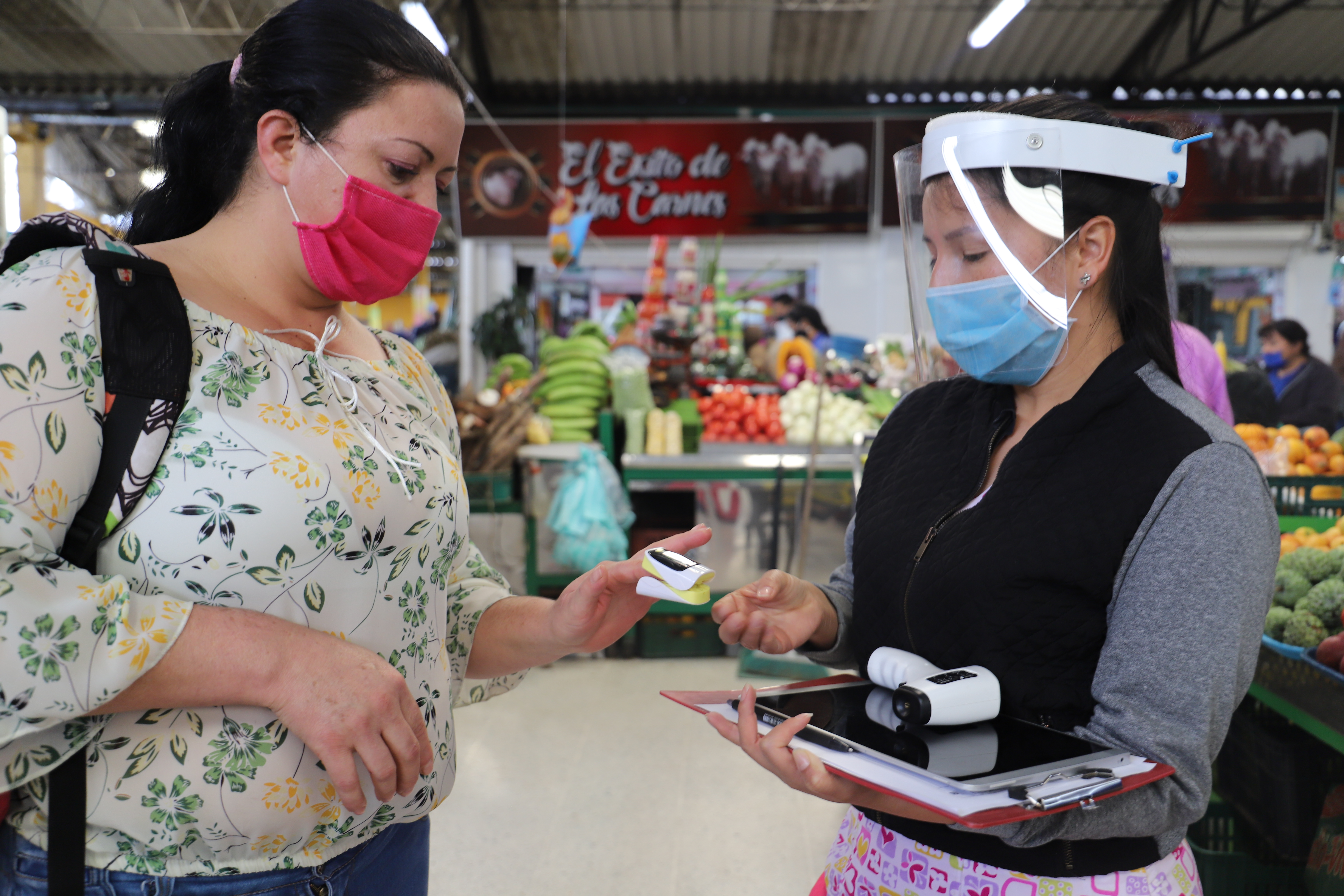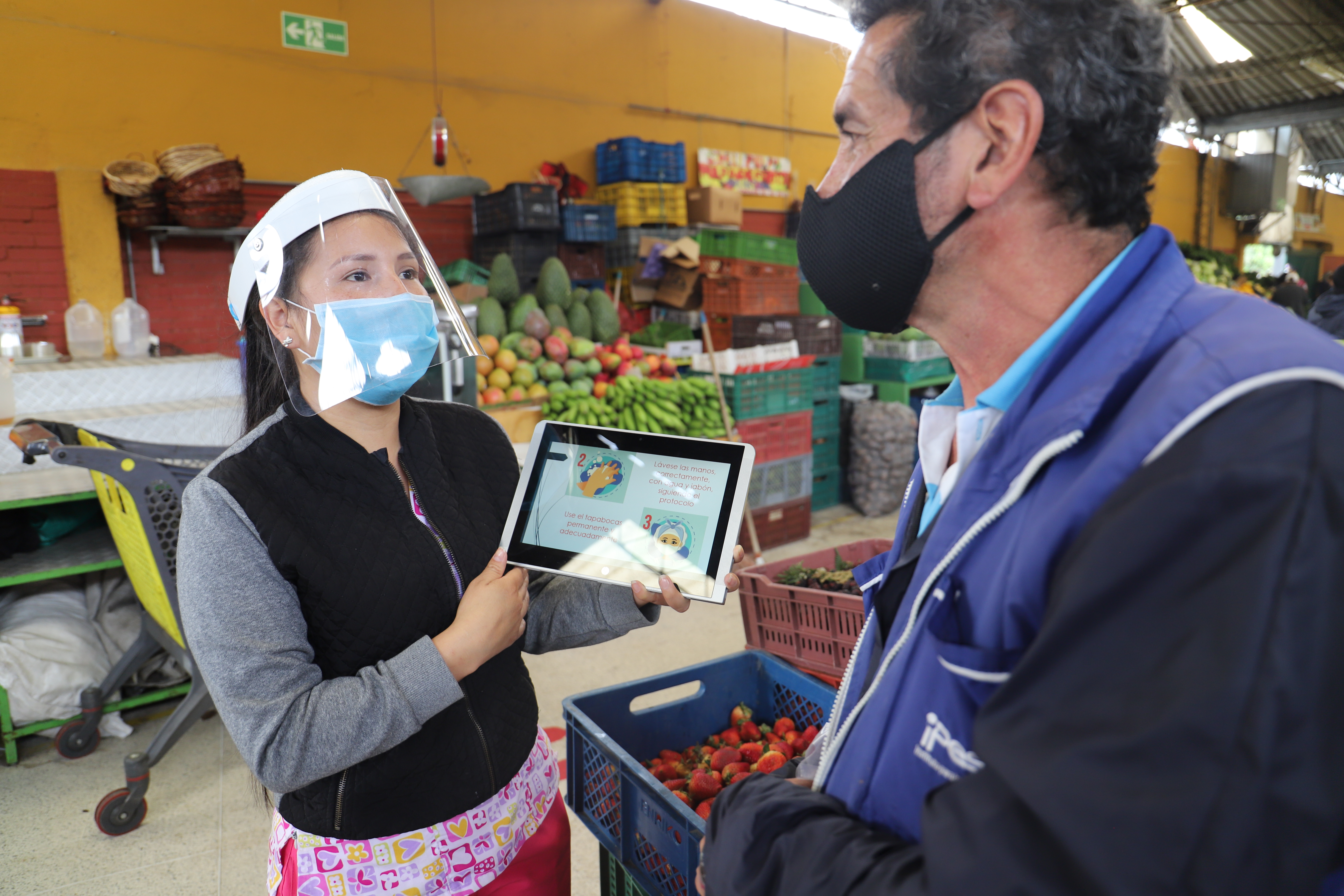- - © City of Bogotá
- - © City of Bogotá
- - © City of Bogotá
- - © City of Bogotá
- - © City of Bogotá
- - © City of Bogotá
- - © City of Bogotá
- - © City of Bogotá
City
Bogotá
Main actors
City Government, Research Institutes / Universities
Project area
Whole City/Administrative Region
Duration
Ongoing since 2016
A comprehensive business model to revitalise Bogota's marketplaces.
Marketplaces are traditional spaces for commercialization, fulfilling an essential role in the city's food supply chain while providing citizens with a cultural experience. The District Institute for the Social Economy (IPES) of Bogota designed and implemented a management and administration model to revitalize the 19 district marketplaces in the city.
The model has consolidated as an effective instrument for revitalizing and positioning the markets through:
- the transformation of commercial and marketing practices that strengthen the potential of each marketplace,
- the promotion of association, healthy coexistence, business culture and the empowerment of merchants,
- the improvement of the quality of life of merchants and citizens, and
- an increased share of the food supply market and other value chains like gastronomy and tourism.
Marketplaces provide people with memories, tradition, culture, and spaces to meet in the city that connect people to Colombia’s countryside. With new commercial shopping trends like hypermarkets, marketplaces were struggling to survive and at risk of disappearing.
In 2016, all nineteen marketplaces under the local government’s responsibility were experiencing serious economic and sustainability problems. An IPES study determined some of the most common issues: deterioration of infrastructure associated with inadequate hygienic and sanitary conditions, the lack of business vision and organization among merchants, including low and informal occupation, and the absence of market strategies. Moreover, these facts affected long-term viability because citizens preferred to shop in other establishments.
To revitalize and increase the districts' marketplaces share, IPES designed and implemented a management and administration model. The model sought to transform the district's marketplaces as heritage assets and cultural, gastronomic, and tourist destinations to enhance their competitiveness, development, and innovation, in compliance with the regulatory framework that governs them.
The model focuses on cultural, business, and commercial strengthening, in coordination with the Public Policy on Food and Nutritional Security and the Master Plan on Food Supply and Security, thus contributing to secure and generate alternatives access to quality food for the citizens.
Timeline
2016
The start of an intervention plan based on the identification of the potential and the commercial positioning of each marketplace.
Strategies for cultural, business, and commercial strengthening to improve the network of marketplaces in the district initiated.
2017
Update of Resolution No. 018, particularly the administrative, operational, and maintenance regulations of the district's marketplaces.
A diagnostic study to understand the relationship between the buyer and the marketplaces.
Implementation in all 19 marketplaces of the management and administration model.
2018
Development of pilot measurement of Bogota's food supply.
Design of the model
As a basic input for the model's design, IPES used analysis of their authorship to understand the situation of the marketplaces through the identification of facts that hindered their sustainability, which was associated with:
- A disharmonious relationship between the institutions and the merchants.
- A deterioration of the infrastructure, deficient cleaning, and lack of rigor in environmental and health management.
- The absence of marketing strategies that would encourage merchants to act with an entrepreneurial vision.
- The invisibility of the markets as tangible and intangible heritage of the city.
Market study
To define the model, IPES carried out a study in three marketplaces to better understand the buyer - marketplaces' relationship and to capture the buyer's purchase route value offer perception.
The study showed critical factors in terms of commercialization, marketing, health, infrastructure, security, and coexistence in the marketplaces analyzed. The recommendations of the study focused on the design and implementation of strategies that:
- Facilitate the routes through the markets (signaling);
- Provide comfort to customers;
- Promote customer loyalty;
- Improve exhibition spaces;
- Promote communication and image projection;
- Target young people, traders, and children.
Model Components
The model has five components:
- Application of the administrative, operational, and maintenance regulations of the district marketplaces.
- Dynamization of the specialized markets by each plaza. It includes the identification and characterization of the plazas based on market variables such as product, price, distribution and communication.
- Promotion of the relations, participation, and healthy coexistence of the merchants.
- Business promotion.
- Improvement of infrastructure, and compliance with health standards.
The project is under the responsibility of the district government, the Mayor's Office of Bogotá, and the head of the Institute for the Social Economy (IPES).
Results include:
- More than 1,600 merchants have signed a contract for the legalization of their status.
- Strengthening of the local administration. Thanks to the development of successful legal and administrative instruments for the marketplaces, IPES gained credibility and showed governance capacity as a public agency ,
- The number of visitors increased from 15,000 in 2016 to more than 1 million in 2019.
- Increase in the shares of the marketplaces in the city's food supply chain. Being 2.5% in 2016 to 3.9% in 2019.
- Development of specific business trends: home service (which also generates employment), electronic payments (which attracts more customers), and digital marketing through social networks (which generates better positioning in the markets).
- 13 reading points with more than 5,000 books each and other activities for more than 22,000 children.
- Banking for more than 1,600 merchants, dismantling informal credits.
- 42 business gatherings between merchants and producers to facilitate direct contact.
- 8,000 employees trained in customer service, coexistence, good food manufacturing practices, efficient water use, and financial education, among other topics.
- The improvement of infrastructure and adaptation of premises and maintenance.
- More than 2,770 people, including shopkeepers and shop assistants, wear uniforms.
- The LATAM Smart City Awards 2019 recognized the model as a Latin American transformation and innovation project.
Challenges include:
- Continuing with the investment in infrastructure in the markets as a form of empowerment of its merchants.
- Certifying the marketplaces according to the ISO environmental standards to generate greater confidence in the users who visit them.
- Formulating loyalty strategies to expand commercial coverage and participation in the food supply market.
- Constantly linking strategic allies from the financial sector, international cooperation and academia to expand the actions of the model.
- Continuing with the legalization of merchants in the 19 marketplaces.
- Seeking national and international alliances for the promotion and recognition of the marketplaces.
- Converting the district marketplaces into national and tourist heritage.
- Focusing on communication strategies integrally and robustly to position the products and services offered by the marketplaces.
- Continuing with the processes of permanent self-evaluation that allow for reflection on the strengths and weaknesses of the model, allowing for continuous improvement.
As it is a participatory process, the systematization of this good practice involved stakeholders who played a relevant role in its development and implementation, either directly or indirectly, as executors or beneficiaries. With the help of IPES, a systematization workshop was held to learn about the results, challenges, and lessons learned from the model.
Lessons learned are understood to be those aspects that have improved the process of implementing the strategy, and which would be proposed as suggestions to another city or ally interested in replicating this initiative. Based on the information gathered and the results of the systematization workshop, the following lessons learned were extracted:
- Encouraging participation among the merchants has made it possible to formulate action lines that respond appropriately to their needs and generate a sense of co-responsibility.
- The importance of training merchants in commercialization, marketing and business strengthening strategies was fundamental for the dynamization of the marketplaces and increasing their competitiveness.
- The need to encourage spaces for interaction between traders, such as training, workshops, plays, cultural and recreational activities, improved coexistence, levels of well-being and interpersonal relations in the marketplaces, also generating new mechanisms of association.
- Alliances with public administrative peer entities in other countries, as well as with hotel companies and embassies, can be strategic to attracting public attention to the markets.
- The importance of consolidating alliances and agreements with organizations that promote cultural and artistic development is fundamental to the exercise of empowerment.
- The exchange of experiences and lessons learned among the marketplaces on the development of the components of the model promotes the exercise of co-responsibility, relationships and healthy coexistence among the traders.
- Raising awareness among shopkeepers about the importance and advantages of their role as entrepreneurs and not as beneficiaries of the state makes it possible for them to become future administrators of the marketplaces.
- The importance of the management, control and permanent follow-up with the professionals responsible for implementing the activities developed by the model in the marketplaces. It improves the self-confidence of merchants and self-regulation becomes more effective.
- The need to sensitize traders about prohibitions, sanctions and regulatory requirements, with recreational or cultural activities, facilitates the application of the regulation.
Replicable elements
- The five-component model of management and administration of the district marketplaces.
- The participatory model that integrates traders, buyers and institutions in the committees for the promotion of competitiveness and the commercial strengthening of the marketplaces.
- The administrative structure of the district marketplaces, through interdisciplinary teams (administrative, legal, commercial, environmental, psychosocial and infrastructure).
City of Bogota’s Best practice document
External links / documents
On Map
The Map will be displayed after accepting cookie policy
